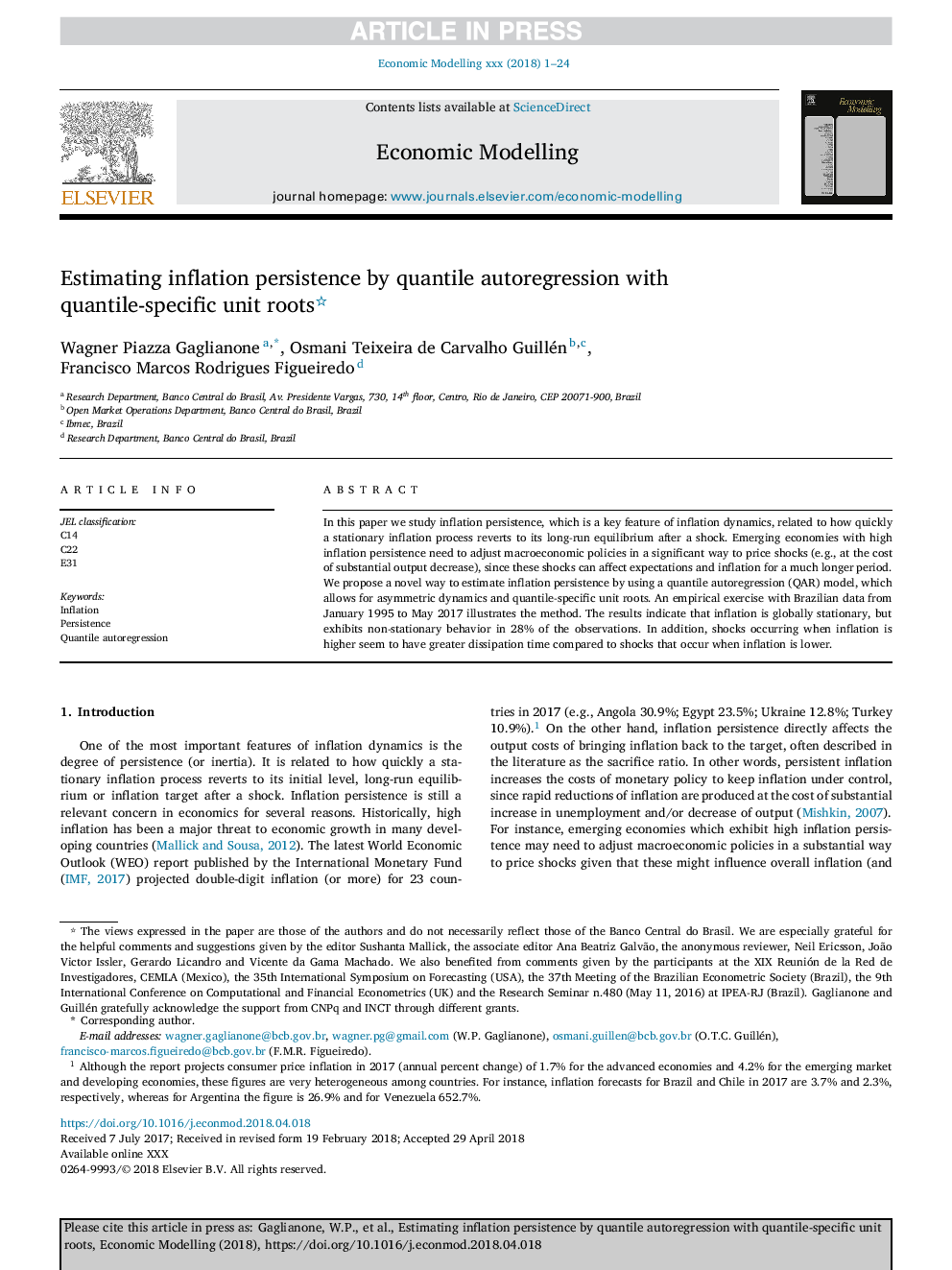| Article ID | Journal | Published Year | Pages | File Type |
|---|---|---|---|---|
| 7346854 | Economic Modelling | 2018 | 24 Pages |
Abstract
In this paper we study inflation persistence, which is a key feature of inflation dynamics, related to how quickly a stationary inflation process reverts to its long-run equilibrium after a shock. Emerging economies with high inflation persistence need to adjust macroeconomic policies in a significant way to price shocks (e.g., at the cost of substantial output decrease), since these shocks can affect expectations and inflation for a much longer period. We propose a novel way to estimate inflation persistence by using a quantile autoregression (QAR) model, which allows for asymmetric dynamics and quantile-specific unit roots. An empirical exercise with Brazilian data from January 1995 to May 2017 illustrates the method. The results indicate that inflation is globally stationary, but exhibits non-stationary behavior in 28% of the observations. In addition, shocks occurring when inflation is higher seem to have greater dissipation time compared to shocks that occur when inflation is lower.
Related Topics
Social Sciences and Humanities
Economics, Econometrics and Finance
Economics and Econometrics
Authors
Wagner Piazza Gaglianone, Osmani Teixeira de Carvalho Guillén, Francisco Marcos Rodrigues Figueiredo,
